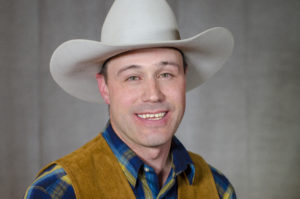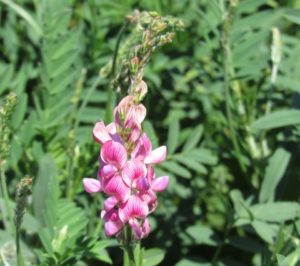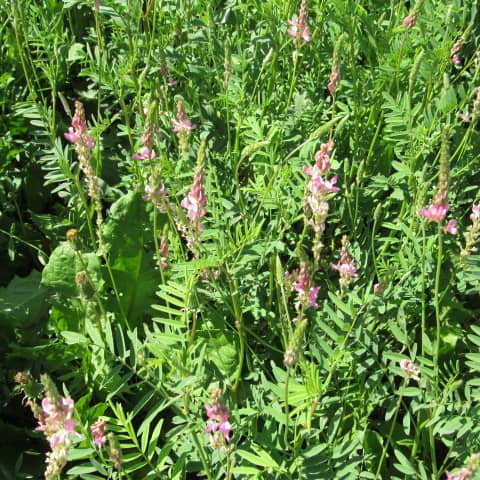Northern Ag Network territory grows some high-quality grass and alfalfa. In some cases, it’s nationally recognized and used on dairy and horse operations. For some producers, it may be time to change the rotation on the hay field or find another profitable option. There are typically two options; legumes and annual forages.
Legumes
Legumes aren’t typically top of mind for producers but they are an option. Northern Ag Network’s Leif Bakken talked with University of Wyoming extension educator, Jeremiah Vardiman (right), who  recommended two types of legumes that can work. First, Vardiman recommends sainfoin if producers are looking for a grazing opportunity.
recommended two types of legumes that can work. First, Vardiman recommends sainfoin if producers are looking for a grazing opportunity.
“It has a non-bloat characteristic to it,” Vardiman explained. “It can be grazed during the growing season and there are a lot of benefits to sainfoin. One of the drawbacks to sainfoin is it can be a challenge to get established. It is a poor competitor, but once you get that crop established it is a good legume and it does really well. It favors a lighter soil, kind of a sandier or loam soil where it has some drainage to it. In clay, it runs into disease issues, like root rot.”
 Sainfoin (left) will not bring yields like alfalfa but the benefit of it is the non-bloat characteristic as well as the palatability of the plant. Unfortunately, that also draws in wildlife so depredation on sainfoin is a factor to consider.
Sainfoin (left) will not bring yields like alfalfa but the benefit of it is the non-bloat characteristic as well as the palatability of the plant. Unfortunately, that also draws in wildlife so depredation on sainfoin is a factor to consider.
Birdsfoot trefoil is another legume that can grow in this region. Vardiman said it has not gained much traction because the yields are lower than alfalfa and it likes a high-water table, low spots in a field, and does well in wet areas. The legume can yield well and has good protein if grown well and grown right.
Annual Forages
Annuals are another consideration to change the rotation of grass or alfalfa fields. Vardiman recommends an annual crop because it can help work out field issues like leveling the ground or getting rid of disease with two years of an annual while also reaping a forage for feed or hay. He said there are three big categories of annual crops: winter, spring, and warm season annuals.
Winter and spring annuals are most common. These crops include winter wheat, winter barley, spring wheat, spring barley, and oats. For warm season annuals there is sorghum/sudan grass and teff grass.
“What I understand and hear from producers that do grow it, teff is a sensitive crop in terms of timing. You have to get in there and hit those windows of harvest timing if you really want to push that crop and have a good yield. If you don’t, it just doesn’t quite get there and it’s a sensitive crop in that regard but it puts up some beautiful grass hay.” Vardiman added, “Teff is really desirable and, to my understanding, has a good market.”
Whether raising annual forages or buying them, Vardiman encourages a nitrate test. This gives confidence the crop was grown properly and protects the livestock as well as the producer from losing profit on the other side.
The Decision Depends on the Outcome
What a producer puts in the field comes down to what is the desired outcome of the operation and where is the operation located. Some of the questions that Vardiman says producers should ask themselves are: Am I feeding cows? Am I grazing on that? Do I need forage during the growing season? Am I wanting to put up some hay? Do I need a commodity to sell? Am I renovating that field?
“All those characteristics of what that field is and what the purpose of that field is, is probably going to be the larger driving factors. But the other two factors to throw in are equipment and market.” Vardiman continued, “Do I have the equipment to roll in with that forage or crop? If I don’t have that equipment, is it really worth paying for new equipment for only one year’s production? Can I make that cash flow? Can I finance that and make it work and be profitable? The big thing is, we have to have somewhere to go with it. Having an end use for it to turn a profit.”
Vardiman suggests that profit could be in horse hay or other hay markets, or leasing out pasture ground for grazing. It could also be fulfilling the needs in the commercial herd or the feedlot.
Now is the time to be thinking about making forage decisions. That means looking at restoring the ground with a rotation of annuals or legumes, and deciding is it best used for grazing or haying. Once those decisions are made, it’s just a matter of getting in the field to make it happen.
###
Photos courtesy Jeremiah Vardiman
Leif Bakken – Northern Ag Network – 2021


